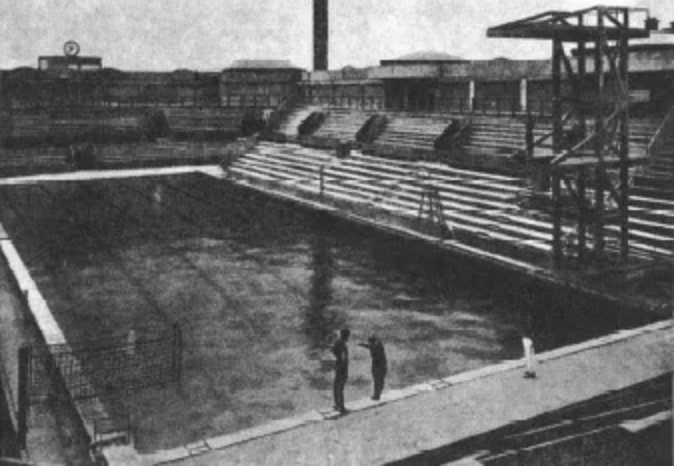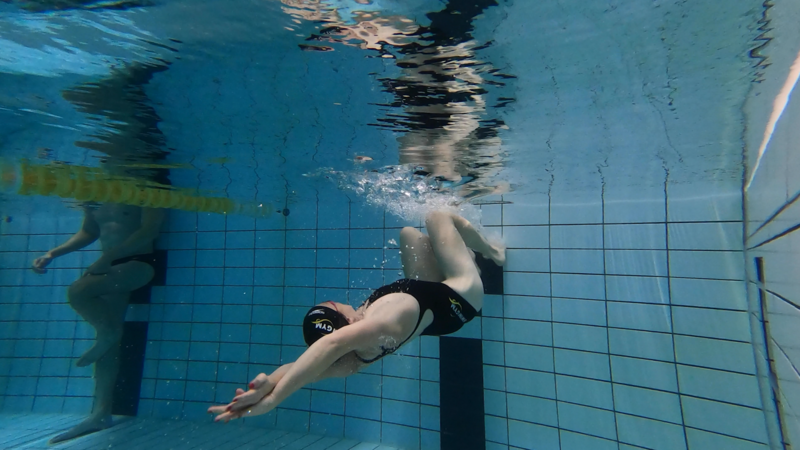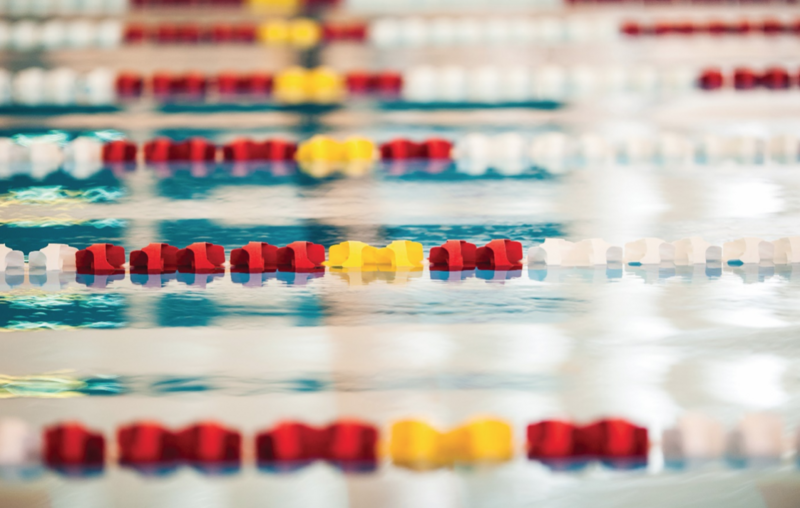Swimming blog - FUN Defining Moments in Swimming History
What are the defining moments in your swimming? Learning a new stroke, swimming 100m under a minute or swimming across a lake. These milestones have pushed you forward and changed you into the swimmer you are. Likewise, the history altering moments of swimming have pushed the sport forward. Let's dive into some defining moments of swimming history. Some of them will surprise you and help you appreciate this beautiful sport even more.
Birth of the Olympic sized swimming pool
Following the black line wouldn’t be a thing if it weren’t for the following defining moment in swimming history. The Olympic games of 1924 in Paris was the first to use the standard 50m pool with lanes. The lanes were marked off with lane lines made out of cork and a black line painted on the floor to help with orientating the swimmers. By the way, the 2024 games will be in Paris, exactly a hundred years later.

Since then, this has become the Olympic standard and a 50m pool is also called an “Olympic sized” swimming pool. To be clear not every 50m pool is an official Olympic pool as it needs to meet the criteria of the Olympic committee to be officially an Olympic pool. In the 1970’s the 25m pool became popular due to space and budgetary constraints. World records can be swum in both pools and is denoted by Short Course Metres (SCM) for the 25m pool and Long Course metres (LCM) for the 50m pool.
Flip Turns
The 1956 Olympics in Melbourne saw the introduction of the flip turn in freestyle. The flip turn is used to change direction in swimming when you get to the end of the lane. You flip yourself over in the water. Want to know how to do it? Check out these tutorials or this flipturn course.

It was invented by Al Van de Weghe in 1934. He was a Backstroker and used the flip turn to change direction more quickly than the others. At this time, it was legal.
However, it was adopted in freestyle first and it became a defining moment in swimming as no competitive freestyler or Backstroker now, would think of doing otherwise.
Ironically it was invented by a Backstroker in 1934, but only in 1991 did FINA allow it for the first time in modern swimming in the Backstroke events.
Goggles
Have a look at the picture below showing the incredible Gold Medal haul of Mark Spitz. Notice anything unusual? You are right! No swimming goggles. 
Goggles were first allowed in competitive swimming in 1976. Four years after that historic games in Munich. This is no doubt a defining moment in swimming and one our eyes celebrate every metre in the beautiful blue of our chlorinated Olympic sized pools.
The underwater phase
The underwater phase has dominated the swimming landscape for many moons and provided two defining moments, one for Breaststroke and one for the rest. At the 1956 games in Melbourne, six breaststroke swimmers were disqualified for swimming lengthy periods under water. Because of the dangers of oxygen starvation and passing out underwater FINA changed the rule for Breaststroke. The rule limits the distance that can be swum underwater after the start and states that the head must break the water after each arm cycle. Next time you see Adam Peaty swim, have a look for these things.

At the 1988 Olympics in Seoul, two backstroke swimmers swam 33 metres underwater before surfacing. Fearing the safety of the swimmers, a maximum distance of 15m underwater, off the wall, was introduced in 1991. Butterfly and Freestyle where again pushing the boundaries of the underwater phase with the dolphin kick, so in 1998, FINA applied the 15m underwater ruling to all three strokes: Butterfly, Backstroke and Freestyle. Nowadays there are markings on the lane lines to help the referee see whether a swimmer respects the 15m ruling. Those who don’t are disqualified.
1500m Freestyle in Tokyo 2021
Katie Ledecky was the first woman to win the 1500 freestyle at the Olympics, ever. Because up until the 2020/2021 Olympic games the 1500m Freestyle has not been on the women’s programme. Women have been swimming in the Olympics since 1912, over a hundred years, but the longest distance they were aloud to swim was 800m because they were seen as too ‘delicate’ to swim the 1500m. They can’t be that delicate because women have been swimming the 1500m at the World Aquatic Championships since 2001 and the 10km marathon since 2008. It is not often in modern swimming that we get to say someone did something for the first time in the history of the sport, this is therefore a defining moment.
We hope you have enjoyed our defining moments in swimming history and allowed you to think about your own moments or the history you still want to make in Swimming. SwimGym.com can help you with all your defining moments. Whether it's learning the flip turn, how to clear your goggles of water while swimming, streamlining for the underwater or swimming a personal record on the 1500m, we’ve got it all covered.

